Brand awareness is a crucial component of any effective marketing campaign. It is a key first step in any sales process, establishing a recognizable, trusted brand that potential customers will turn to when their pain points overlap with your value proposition. In other words, they’ll think of you first when they have a problem.
But brand awareness is about more than just getting your name and logo in front of your ideal target audience. It’s about presenting a brand story that conveys the tone, voice, and values of your organization to your prospects. It’s about putting your products and services in front of the right people at the right time, focused on the needs of your customers and the benefits they will receive.
Brand awareness is about building relationships that supersede a 1:1 transaction—providing value to your customers that rises above need fulfillment. It’s about becoming a trusted partner in their lives, and one of the most effective ways to convey that kind of message is through video.
Video provides a concise, impactful format that can convey a world of meaning to prospects in a compact timeframe. According to Wyzowl, 44% of marketers name brand awareness as the primary way they use video, and 94% “agree that videos have helped increase user understanding of their product or service.” The result is that video alone has an outsized impact on brand awareness campaigns. Optinmonster reported in a recent survey that 54% of video marketers achieved increases in brand awareness, regardless of the original intention of the campaign.
Quality videos can build quality relationships. Let’s take a closer look at how.
The Value of Video
Over the last five years, consumer internet traffic has shifted dramatically from static content to video. Cisco estimates that by the end of this year, video will make up 82% of all internet traffic and over 71% of mobile data traffic, a sharp increase from 56% five years ago. A combination of more devices per capita, an average doubling of Internet speeds in that time, and a boom in video production from major brands and small creators alike are driving a renaissance of online video content. If you’re a marketer for a major consumer brand, the video should already be part of your content mix.
How important has video become for marketing teams?
The same Wyzowl study indicates that more than 86% of marketing teams use video, and 99% of those say they will continue to do so in the future. And it’s not that the other 14% don’t see the value. Most that don’t use video don’t have the resources internally to get started or don’t know where to start. Less than 2% of those surveyed indicated they don’t feel video is needed.
And for good reason. Video is linked to significantly higher ROI, with 49% faster revenue growth than organizations that don’t use video. And it can be reused in successive forms to supplement other campaigns. It’s an efficient use of resources when implemented effectively.
In a recent blog post, we broke down six different types of brand video content and how they can overlap to support your brand awareness campaigns: product explainers to showcase your value proposition and introduce your products to the world; company culture videos that demonstrate your mission and values in an actionable way; testimonials that provide social proof from your biggest and most loyal customers; product demos for those lower in the funnel ready to engage with your products; case studies for deep-dive demonstrations of what your products and services can do for customers; and brand films to provide a demonstrable vision of your brand’s voice to the world.
Done effectively, brand-oriented videos can introduce your brand to a larger audience, establish criteria by which you can be evaluated, and grow your audience over time.
Intuit: “A Giant’s Story”
Intuit launched a multi-channel brand video campaign in 2018 with “A Giant’s Story.” Anchored by a 30-second Super Bowl ad, the campaign included a 4-minute brand story video on YouTube and social media and clips distributed to Instagram and Twitter to support the effort:
The video received more than 16 million views within a few weeks of launch and helped Intuit push a broader branding strategy that goes beyond its core Quickbooks product.
Nike: “Moving Mountains”
Nike has long invested heavily in brand awareness campaigns and brand-oriented films that demonstrate its core values, both as a company and in its relationships with customers.
Their “Just Do It” campaign is a legend among marketers, and Nike keeps returning to it in new and interesting ways over time. Another recent campaign is their “Moving Mountains” campaign:
Nike Journal - Moving Mountains - Carlos Brown from Revery on Vimeo.
The series focuses not on world-class athletes pushing the boundaries of human endurance, but on everyday athletes with heroic stories from around the world. Their core brand image of empowerment and overcoming adversity remains intact, but in a powerful, entertaining format that leverages digital platforms to engage with a new generation of potential customers.
The Parts of a Successful Brand Film
A successful brand film demonstrates to your audience what makes your brand authentic and human. It should not pander to what you think your audience wants to see, but connect the needs and wants of your audience with the core values and mission you’ve long since established as a brand.
That’s the difference.
To do this effectively, it’s important to identify five core elements of your brand film:
- Define the key messaging - Clearly outline the message you want to communicate to your audience in your film. It should be direct, concise, and specific to your brand. Avoid vague, overreaching platitudes that can come across as novel or pandering.
- Integrate mission and value statements - To keep your key messaging tight and focused, integrate mission and value statements that represent your brand effectively. You should be able to point to evidence that supports these claims in the way you run your business and engage with customers.
- Tell a cohesive, engaging story - A brand film is, at its core, a film. It should tell a clear, engaging story that viewers will remember. Whether it’s a story of how your brand has helped others or a spotlight on a customer or relationship that represents your mission, it should do more than just present your products.
- Keep it simple and focused - Avoid films that are overly broad or attempt to capture everything about your brand in one sweeping narrative. Identify a single individual, moment, or event that effectively represents your brand and build the narrative around that thing.
- Aim for authenticity that matches your brand - Finally, be authentic. Tell your story in a way that feels accurate to the way you go about your business every day. Inauthentic videos can backfire and cause more harm than good.
There are risks in excessive novelty that goes above and beyond the five elements above. It can feel inauthentic. Pepsi infamously ran an ad in 2017 featuring Kendall Jenner joining an unnamed protest and giving a can of Pepsi to a police officer. The backlash was immediate and intense, accusing the brand of co-opting and trivializing the Black Lives Matter movement. In an attempt to align themselves with an important social discussion happening at the time, Pepsi crossed several lines and had to pull the ad.
There are risks of treating social movements, political discussions, or broader concerns in society as novelties to incorporate into an ad, especially if they don’t align with the established brand image. At the same time, brands like Patagonia successfully discuss social issues because they have long made them part of their brand image. They routinely produce both short and feature-length brand films focused on climate change, social justice, and more:
This is the brand image that Patagonia has established, and they use their platform to engage in broader discussions in a respectful, appropriate way.
Increasing Brand Awareness for Your Film
Once you’ve crafted a brand film, how do you reach the widest audience possible? This is a core concern for every marketing team.
Knowing Your Customer
The first step is to know where your ideal customer spends their time and focus your efforts there. You likely already have a sense of this from existing campaigns, but don’t neglect new and emerging formats. For example, YouTube is as universal of a platform as you will find with 88% of marketers investing in the platform.
With 2.5 billion users through the end of 2021 and one of the largest search databases in the world, YouTube is a de facto destination for all video content. From 2021 to 2022, 10% more marketers are investing in Instagram (68% total) and 13% more are using TikTok (33% total). While YouTube remains a consistent king, new audiences, especially the emerging buying power of Gen Z, are turning to other platforms for more curated, short-form content. Brands will do well to invest in these platforms to support their efforts.
Leverage Creativity in the Constraints of the Format
Brand films can be 30-second introductions to your organization or feature-length films (as in the case of Patagonia). How you engage your audience will depend on where they are most likely to watch your content.
Intuit’s campaign above is a prime example, presenting multiple formats across different channels: 4 minutes on YouTube, 30-60 second clips for social media, and a tight 30-second ad for television. The format will dictate the bounds of your creativity to some degree.
As more marketers shift spending into formats like Instagram and TikTok, brand films are becoming shorter, serialized, and more targeted. Patagonia, again, is a prime example of this. On their website, you’ll find nearly hour-long documentary-style films, but on TikTok, they’ve curated short, sub-minute-long clips like this:
@patagonia What is this, a highball for ants?! #climb #bouldering #timelapse #solo #rockclimbing ♬ original sound - 🅿️atagonia
They’ve evaluated the constraints of the format, identified what the audience of this platform will find interesting, and adjusted their content to match.
Another key consideration is the difference between mobile and desktop viewership. As of August 2022, 53.7% of all website traffic is via mobile devices. Social media traffic skews even harder to mobile, meaning brand films must consider the format. Shorter, easier to view on smaller screens, and supported with on-screen subtitles—many brand films are now designed for mobile-first viewing.
Further Promoting Your Film
By default, your brand film should be published on as many social media channels as possible based on where your audience currently engages with your brand. Adjust the length and format of your content to match the needs of Facebook, Instagram, TikTok, and YouTube, but use them extensively to reach as broad a segment of your audience as possible.
But don’t stop with social media marketing.
You have access to extensive audiences beyond those who have proactively followed you. Your email list, for example, offers dozens of potential segments that can be targeted with a brand film. ECommerce data will help determine which segments can be targeted with the messaging you’ve crafted based on demographics, geography, and buying history.
You can further boost your message beyond your existing following with a targeted advertising campaign. Meta Business Suite offers advertising solutions for Facebook and Instagram that allow you to target existing audiences, lookalike audiences, and interest-oriented audiences based on thousands of potential criteria you can select. YouTube taps into Google’s extensive network, which allows you to expand beyond YouTube and target your ads to specific websites where your audience is likely to be.
Beyond social media advertising, programmatic advertising can be broadly beneficial in sharing your brand story with a wide audience. Native ads help to elevate video ads with headlines and body text on targeted websites. Interstitial ads can be presented on mobile devices on these websites and in targeted applications, and both outstream and in-stream advertising options are available for clips as short as 6 seconds. Most importantly, programmatic advertising allows for incredibly precise targeting based on user activity, demographics, and media consumption. This allows you to run awareness campaigns within the consumer or business segment you are targeting. These can help to engage audiences where they are already spending time.
In a recent post, we took a deep dive into the different ad formats available on YouTube, how to leverage audience-matched segmentation and remarketing opportunities, and the anatomy of an effective ad within YouTube’s vast network.
Leveraging Footage for Future Campaigns
If one thing is clear from this section, hopefully, it’s that video is a flexible tool that can be shot, edited, and presented in different ways for different audiences. Your brand’s message will be the same regardless of where you publish the video, but how it is presented will change, so you can capture footage and reutilize it for future campaigns, ensuring an efficient process from the start.
When generating footage, whether in-house or with the support of a third-party agency, keep in mind other ways that you might use that footage in the future. What elements might you be able to revisit or reuse in a future video? It may not be a brand film next time, but a product explainer or a campaign-specific film for an upcoming advertising campaign.
This will allow you to more efficiently and effectively fill your marketing pipeline in the future without needing to commission new footage and creative every time the quarter turns over, and a new campaign is needed.
The Power of Brand Films for Your Company
A strong brand film does many things.
It introduces your mission, values, and philosophy to a new audience of potential customers. It builds trust and loyalty with existing customers. It clarifies your value proposition in a sea of crowded messages. An effective brand film is a manifestation of why you do what you do, and it will communicate with your audience in a way that entertains them, moves them, and compels them to engage further with your brand.
If you are interested in learning more about leveraging brand films for your next campaign, contact us today to learn how we can support your efforts. View our work with brands like Citizen, Castrol, and Janovic to see how we support strong storytelling through video.
.png?width=250&height=153&name=CSI-OverskiesRebrand_LOGO-01(smaller).png)

.png?width=100&height=61&name=CSI-OverskiesRebrand_LOGO-01(smaller).png)


.png?width=88&name=CSI-OverskiesRebrand_LOGO-01(smaller).png)



